The 3 Ways to Add Test Boxes to Google Docs
Perhaps, you want to make your document visually interesting or add clarity to the layout. Maybe you need a way to make a section or paragraph stand out. Or you want to give your document a more professional look.
Well, you can do all of that by using text boxes.
The trouble is, how you add text boxes to Google Docs isn’t immediately clear. There isn’t a specific icon for the action in the menu bar.
But, in fact, there are a few ways you can add text boxes to your docs. And once you know how, it’s an easy process.
So, let’s dive right in with method one:
Way #1: Use the Drawing Tool
The drawing tool in Google Docs allows you to insert lines, shapes and, most importantly for us, text boxes into any document. When you use this method, a window will pop up, in which you can create and customize your text box before inserting it into the doc.
Step 1. Go to Insert > Drawing > +New.
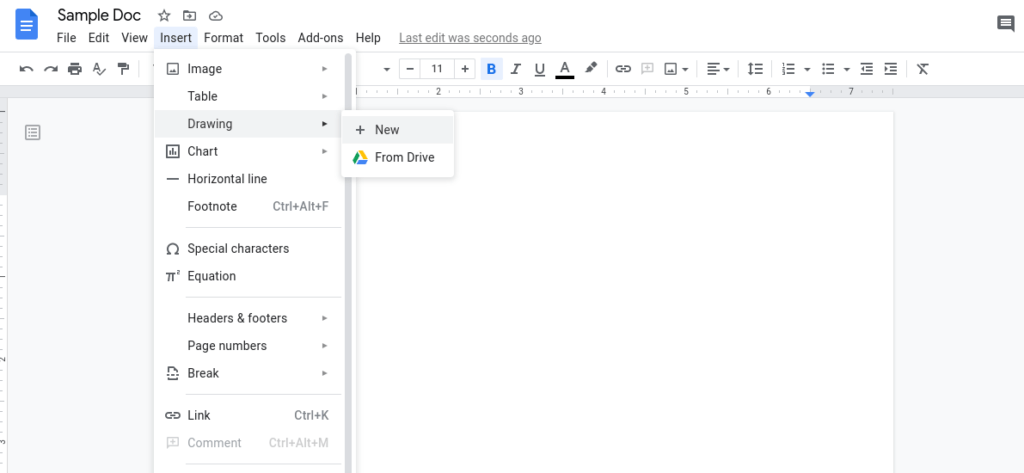
Step 2. Click the Text Box icon.

Step 3. Draw your text box.
Step 4. Enter your text.

Step 5. Make any customizations, e.g. change the border weight or color, using the appropriate icons in the menu bar.
Step 6. Click Save and Close.
Way #2: Use a Single-Cell Table
This method involves creating a single-cell table that will look just like a text box in your document.
Step 1. Go to Insert > Table.
Step 2. Click the first square to create a 1×1 table.
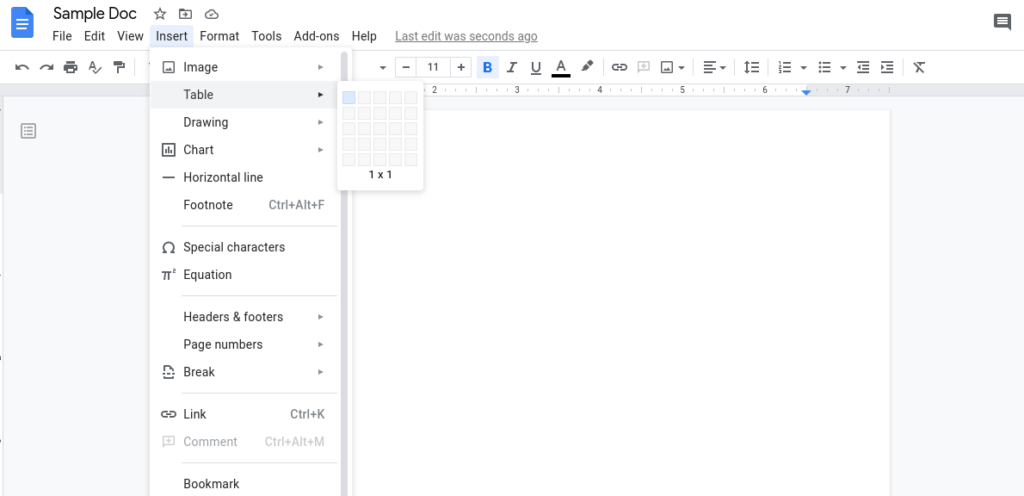
Step 3. Enter your text.

Step 4. Adjust the height and width of your text box by clicking on the lines of your table and dragging them into place .
Step 5. Click on the ellipsis in the menu bar to customize your text box.
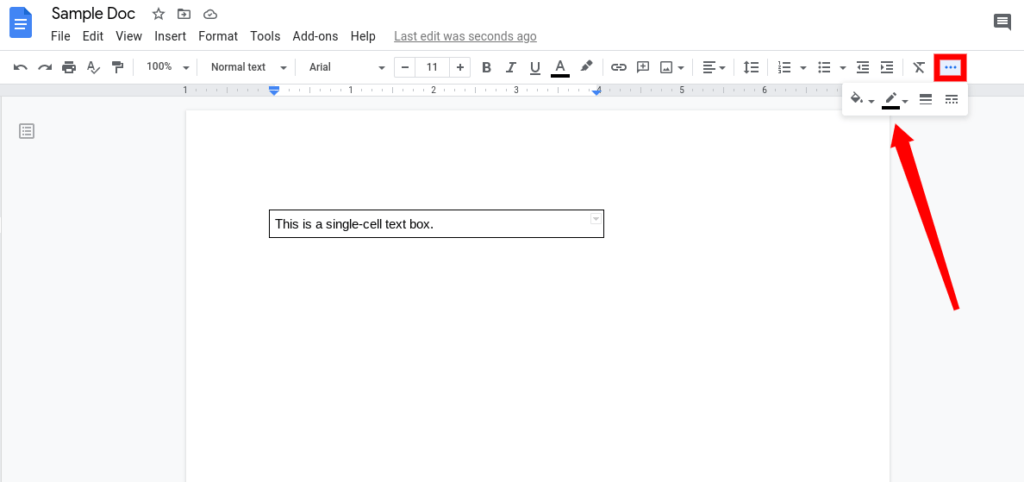
It’s also worth noting that you’d need to use this method to create a text box in the Google Docs app on your phone as the drawing tool isn’t available.
Way #3: Use a Custom Shape
Want more than a standard text box? You have the option to create your text box in the form of a variety of shapes. Say you want your text to appear within a speech bubble or arrow, for example. Here’s how to do it:
Step 1. Go to Insert > Drawing > New.
Step 2. Click on the Shape icon.

Step 3. Choose your shape from the menu.
Step 4. Draw the shape.
Step 5. Double-click the shape and enter your text.

Step 6. Customize your text box as you please using the icons in the menu bar.
Step 7. Click Save and Close.
Which Method Is Best?
Though creating a single-cell table is the quicker method, we’d still recommend using the drawing tool to insert a text box into your document. This is because it’s easier to manipulate and move text boxes that were created using the drawing tool.
However, if you wish to add some flair to your document or create some kind of diagram or chart, then you should use the third method, i.e. create a text box within a custom shape. To give you an example, you could create a diagram like this:

How to Move a Text Box
Once you’ve created your text box using the drawing tool, moving it to another location in your document is real simple. All you need to do is click on the text box and drag it to its new spot.
If you want to change the size of your text box, just click one of the corners and drag it outwards to make it bigger or inwards to make it smaller.
As you can see from these two actions, the way you work with a text box is very similar to working with images in a Google doc.
How to Copy a Text Box
Let’s say you’ve customized your text box and it looks exactly how you want it to. You may wish to copy this text box so that your new text box has the same formatting. All you’d do is change the text inside of the text box once you’ve copied it.
Or perhaps, you need to use exactly the same text box, including the text, more than once. It wouldn’t make sense to create a new text box every time. Simply copying the text box would save you a lot of time and effort.
You can copy a text box using copy-paste. So, right-click the text box and select copy, then paste it wherever you want your copy to appear in the doc. Or use the keyboard shortcuts Ctrl+C to copy and Ctrl+V to paste.
If you want to change the text in your new text box then double-click it to bring up the drawing tool once more.
How to Format a Text Box in Google Docs
Want to make your text box fancier than Downton Abbey? Formatting is the key.
We’ve touched upon the fact that you can customize your text box within the drawing tool. There are some basics that you may wish to alter.
You can change the font and appearance of the text within the text box via the font options in the menu bar. Changing the background color is also pretty easy. Just click the fill icon and select your color.
For the text box border, however, you have a few options. The border weight refers to the thickness of your border. You have several options for border dash including different combinations of dots and dashes. You can also, of course, change the color of your border.
But, what about the advanced stuff?
To adjust the position of the text within your text box, click on the ellipsis in the menu bar of the drawing tool, then the paragraph icon.

Here, you’ll be able to align text left, right or center, and place it at the top, middle or bottom of the text box.

As mentioned above, the way you manipulate text boxes within a doc is similar to images. So, you can alter the way the document text flows around your text box. Click on the text box and you can choose In line, Wrap text or Break text.
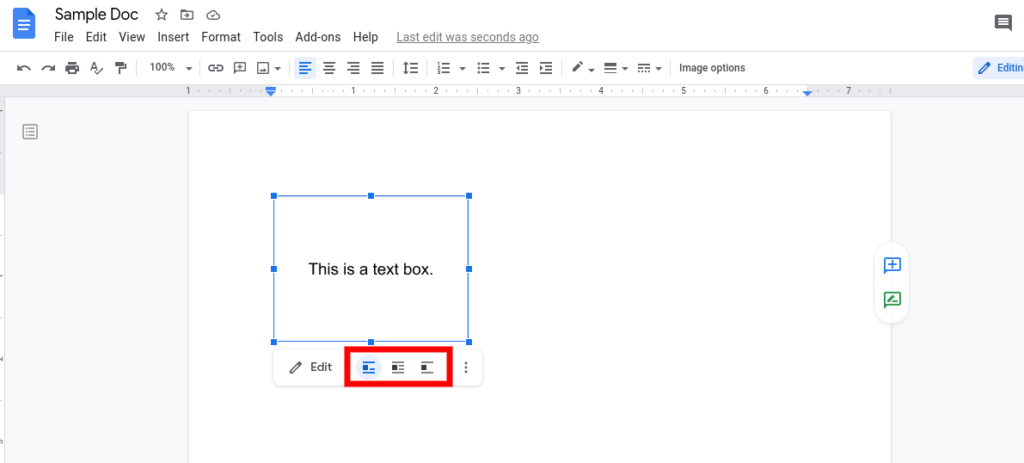
Another thing you may wish to know, in terms of formatting, is how to layer text boxes. To do this, draw two text boxes within the drawing tool. Place one over the other. Then, you can move each text box forward or back by going to Actions > Order. Use this technique to create interesting designs for your text boxes, like so:

Common FAQs and Problems With Text Boxes in Google Docs
Now that you know how to create and format a text box correctly, let’s get down to some of the finer details. Here are some of your frequently asked questions answered and common issues solved:
1. The Text in the Text Box is Blurry
One problem people often come across when they create a text box using the drawing tool is that the text is blurry. Unfortunately, there isn’t a way to sharpen up the text in a text box.
However, many find that creating a single-cell table in place of a text box solves their problem. When you use this method, the text won’t appear blurred.
Fingers crossed Google fixes the sharpness of text boxes in the future.
2. How Do You Delete a Text Box?
To delete a text box in Google Docs, you must first click on the text box to highlight it and then hit the backspace key.
If you change your mind and you want to get it back after you’ve deleted it, simply click the undo button or use the shortcut Ctrl+Z.
3. How Do You Add a Text Box in Google Sheets?
There may be occasions where you need to add a text box in Google Sheets. Let’s say you want to add a note or label to a particular sheet and make it stand out.
For example, when you download a template from a website, they might place instructions on how to use the template in a text box in the first sheet.
The method for adding a text box in Google Sheets is very similar to adding a text box in Google Docs:
Step 1. Go to Insert > Drawing.

Step 2. Click the text box icon.
Step 3. Draw your text box.
Step 4. Type in text.
Step 5. Customize your text box as you please.
Step 6. Click Save and Close.
You can move the text box into position by clicking and dragging it. The text box won’t affect the information in your cells in any way. The final result may look something like this:
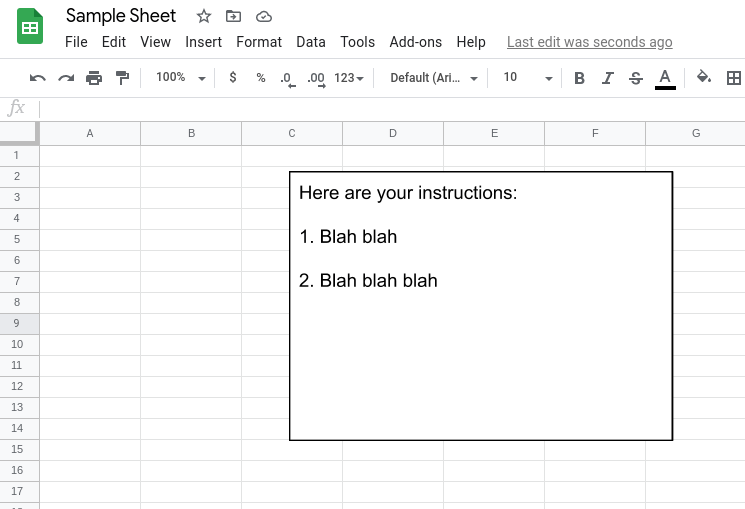
4. How Do You Put a Box Around Content (That Isn’t a Text Box)?
If you want to just highlight a paragraph or section within your text you can essentially add a box around it using a border. Here’s how:
Step 1. Highlight the appropriate text.
Step 2. Go to Format > Paragraph styles > Borders and shading.
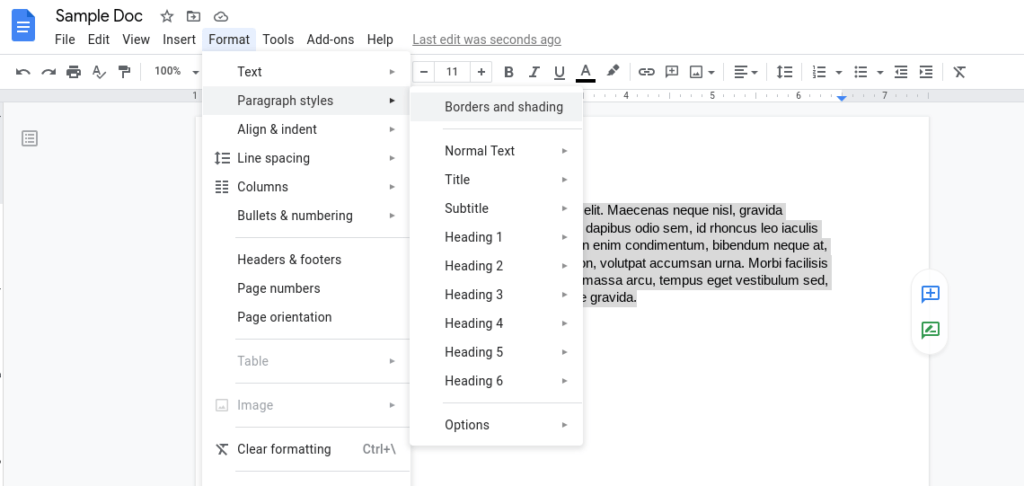
Step 3. Select all four positions that will go around your text.

Step 4. Customize your border, e.g. the width, color or dash effect.
Step 5. Click Apply.
Here’s the final product:

5. How Do You Put Text on Top of an Image?
You may wish to add several labels to an image within Google Docs. Or perhaps you want to note the source of the image via a text box on top of an image.
To do this, you’ll need to go into the drawing tool and add your text box(es) there.
Step 1. Go to Insert > Drawing > +New.
Step 2. In the Drawing tool, click the image icon.
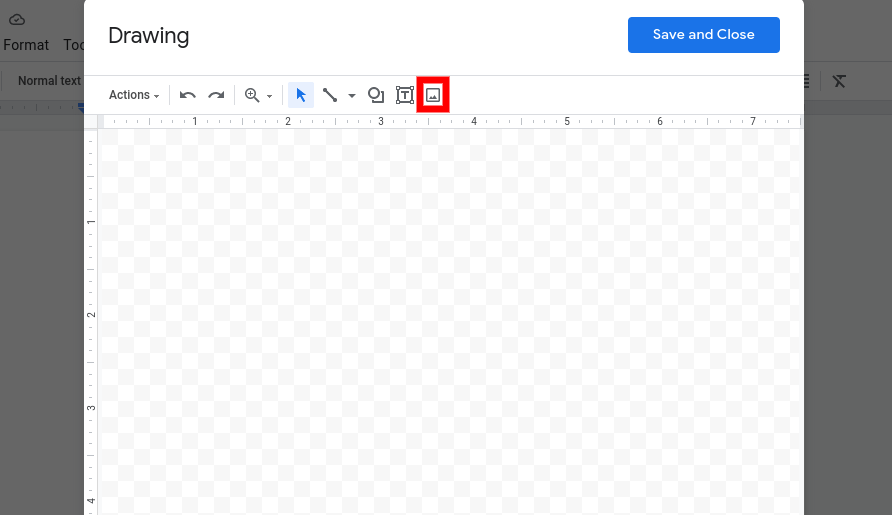
Step 3. Upload your image.
Step 4. Click the text box icon, create and customize your text box.
Step 5. Add your text boxes until all of the labels you need are done. You can adjust the size and move them into place if you need to.
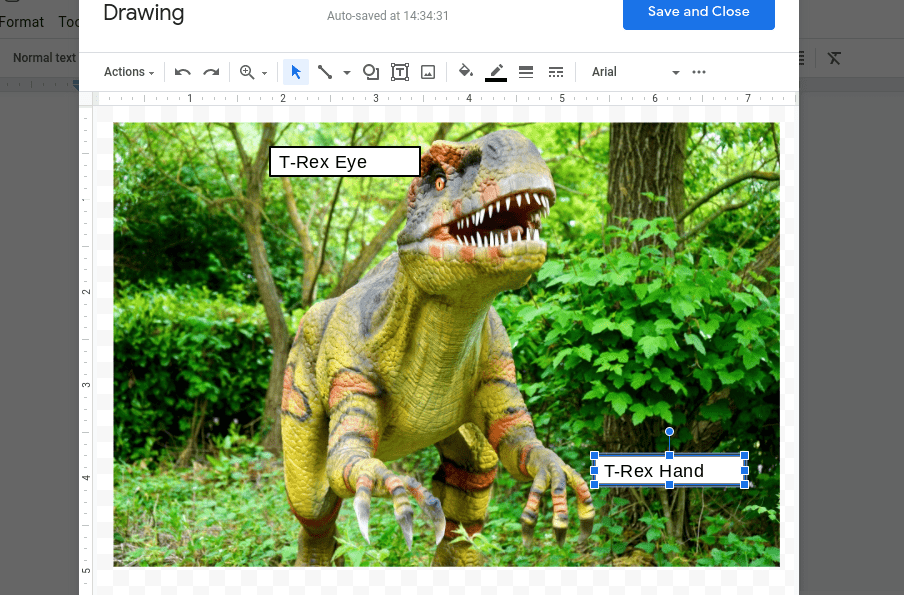
Step 6. Click Save and Close.
Now you have an annotated image in your doc.
6. How Do You Create a Fillable Text Box in Google Docs?
A fillable text box is useful if you plan on creating some kind of form or worksheet. Send the completed Google doc to somebody, they can make a copy, fill in their answers and send it back to you.
The easiest way to do this is by creating a table in Google docs with your questions on one side and answers on the other. Create a table with two columns and however many rows you need. Then move the center line to the left so it appears just after your questions.
It will look something like this:
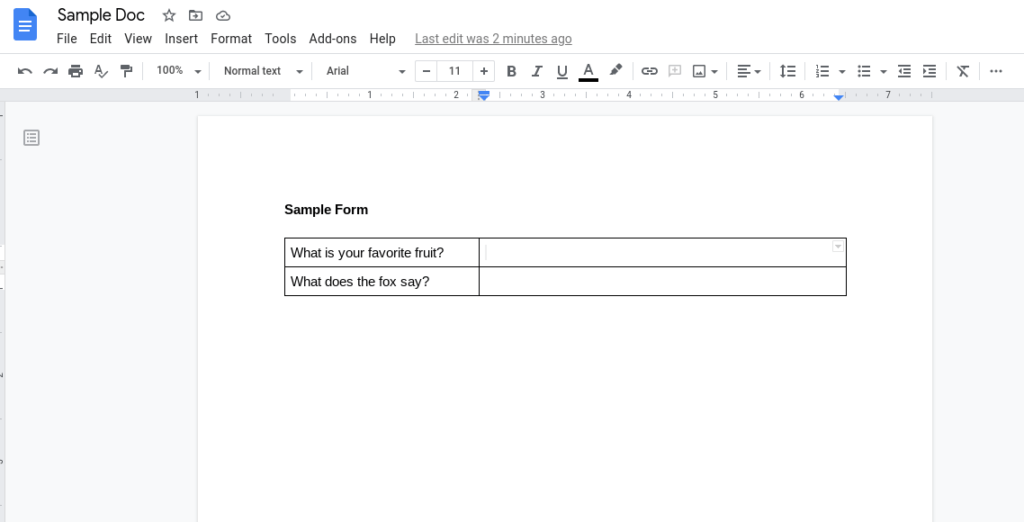
You can change the appearance of your form or worksheet so that all that remains is a line on which the recipient can type their answers. Here’s how to do it:
Step 1. Right-click your table and select Table properties.
Step 2. Change the border to 0 pt.
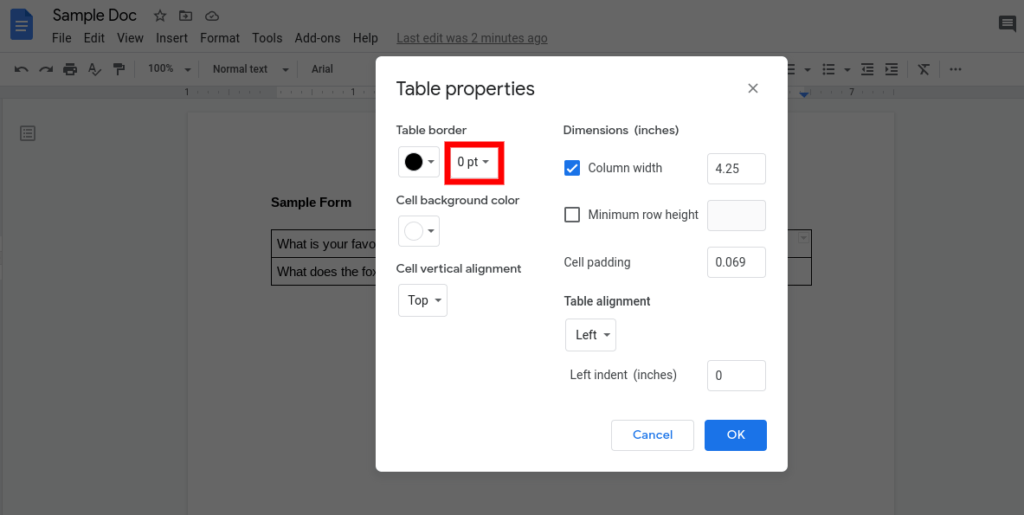
Your table is still there but it’s now invisible.
Step 3. Click where the answer line would be to highlight it.
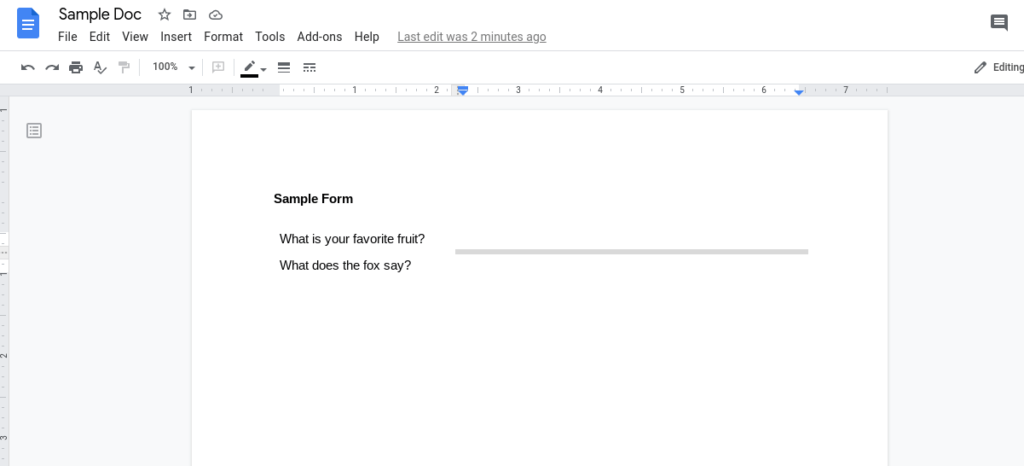
Step 4. Click the border width icon and select 0.75 pt (or whatever width you want).

Step 5. Repeat for each line. The recipient can now type on the line without deleting or altering it.
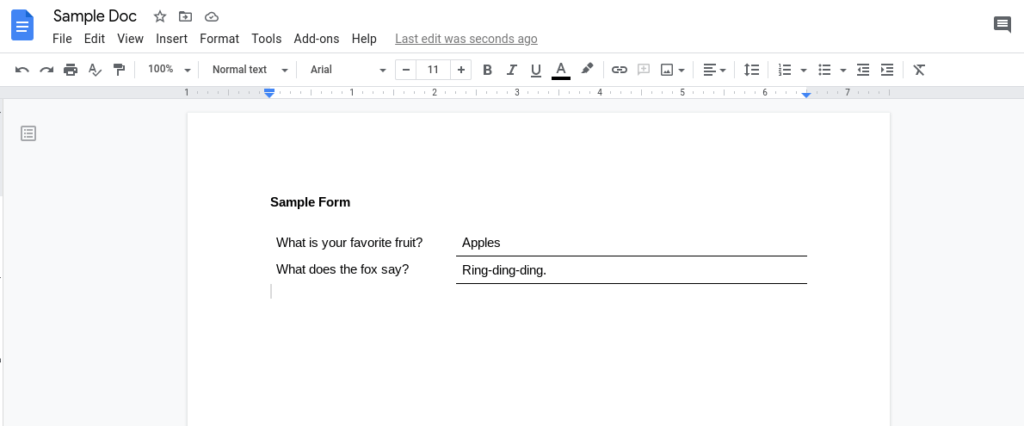
Summing Up
Though you might not use them in every doc, text boxes can be beneficial in adding visual appeal or emphasizing parts of your document.
Google Docs doesn’t have a standalone text box function just yet. But, you can create a text box easily using the drawing tool or by creating a single-cell table.
The drawing tool is the way to go on most occasions as there are more options for manipulating your text box. However, now and then, you may need to use the single-cell table method to get the desired effect.
Feel free to refer back to the FAQ section in this post if you come across any issues or need more information on text boxes in the future.

